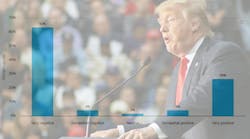About the author: Sean Darcy is northwest regulatory manager for CONTECH Stormwater Solutions. Darcy can be reached by e-mail at [email protected].
Related search terms from www.waterinfolink.com: storm water policy, urban development
Storm water policy is put in place to control nonpoint source pollution and is usually tied to the National Pollutant Discharge Elimination System permit. Implementation tends to take a while—not for a lack of desire to protect water resources, but because it is often challenging to integrate policy through the existing local political structure.
Planning and zoning codes, public works drainage infrastructure requirements and public health and safety standards, for instance, can be affected by changes to storm water policy. It took approximately 15 years to make changes to the original 1972 Clean Water Act and address pollutant concerns directly associated with storm water; it took another 15 to 20 years to integrate these storm water requirements into the network of permits and ordinances and develop the tools necessary to assist storm water designers.
To completely convert storm water policy into a usable format, oftentimes the best solution is a storm water management manual. Integrating generic policy without accounting for technical requirements or variability in geographic conditions can delay policy implementation. By 2010, Washington state will have more than a dozen different technical manuals for storm water management. Although these manuals have undergone substantial additions and account for local conditions, essentially the net results are expanded source control and increased facility size for flow control and/or water quality treatment. While providing additional water quality protection, they also increase the overall cost for developing new infrastructure.
One benefit of storm water management manuals is that they can be updated as new regulatory policies emerge, providing an easier avenue to integrate policy changes. Rather than requiring an ordinance or code revision, which usually requires nontechnical city or county council approval, municipalities can make changes to these technical design manuals through frequent updates. Before the ink is dry on many of these technical storm water manuals, policy changes have started taking shape.
As we continue to develop storm water policies for the ultra-urban landscape, we may need to take a step back and evaluate storm water using a more holistic approach. Low-impact development (LID) design principles have already changed the landscape for how we plan sites. Although we want to be environmentally responsible, we need to encourage redevelopment within the urban setting as much as possible prior to developing existing greenfields. If we provide only incentives to use LID, we may end up ignoring existing problems and add to urban sprawl where it is easier to accommodate many of these techniques.
As we continue to expand new policies, we should also consider the broader aspects of our overall impacts—and not just those attributed to storm water. We need to begin shaping our concepts of the overall site toward a “net-zero” impact balance. As we continue to modernize design, the basic principles are not necessarily to lower the storm water impact through onsite mitigation, but rather to completely neutralize anthropogenic impacts (energy, carbon load, water use, etc.) as much as possible. Planning for a zero impact in the ultra-urban setting will ultimately provide the best type of environmental site design.
Download: Here

